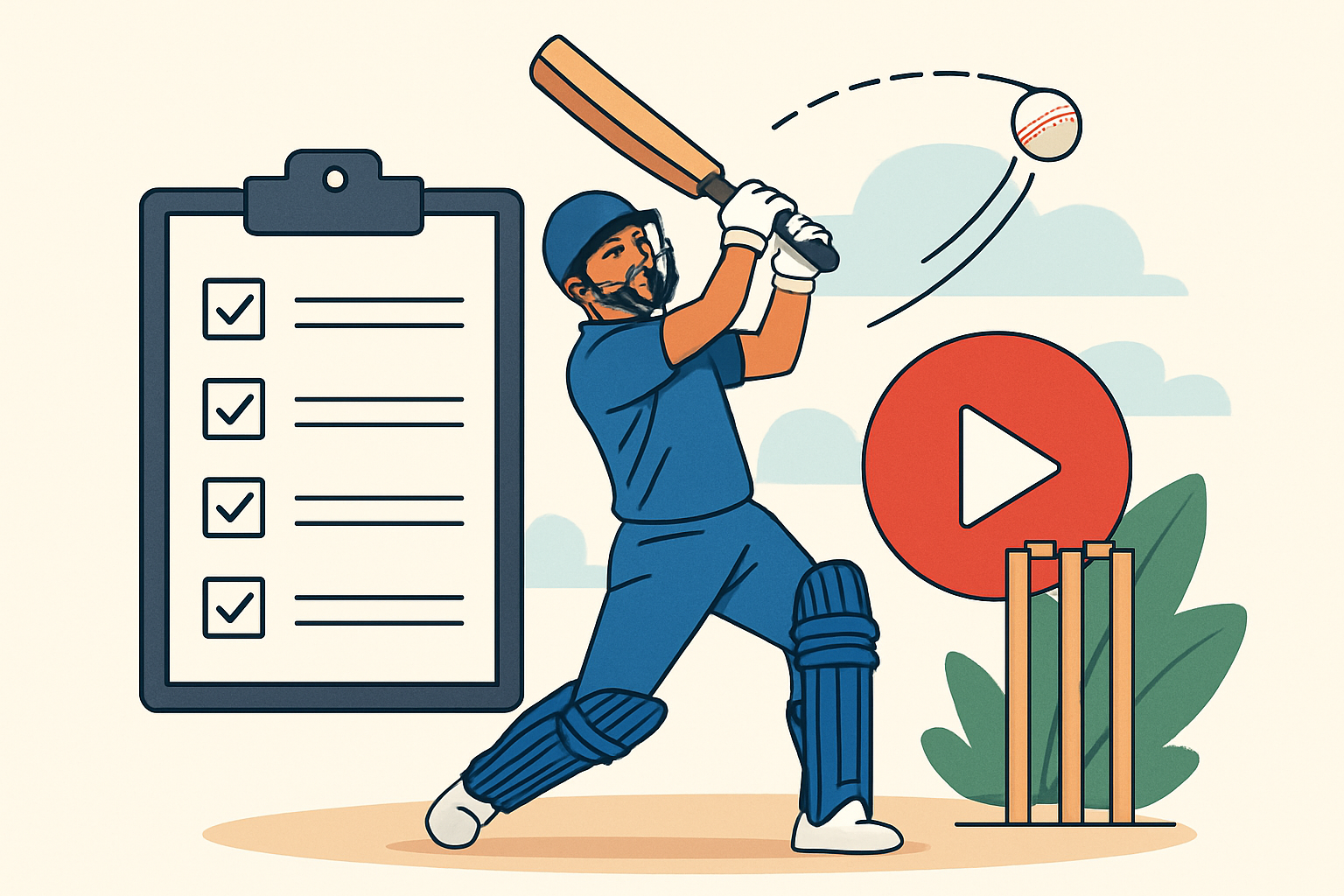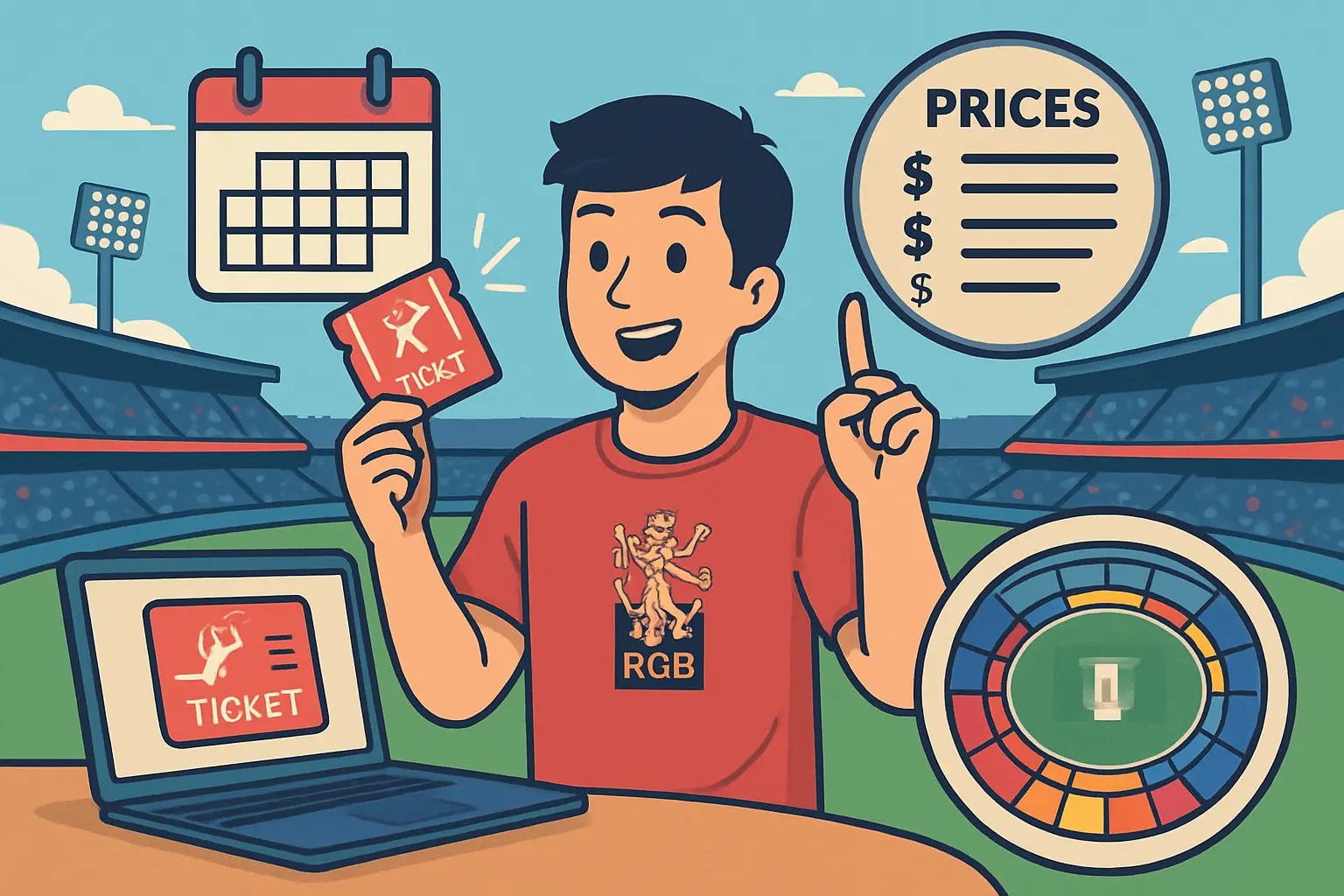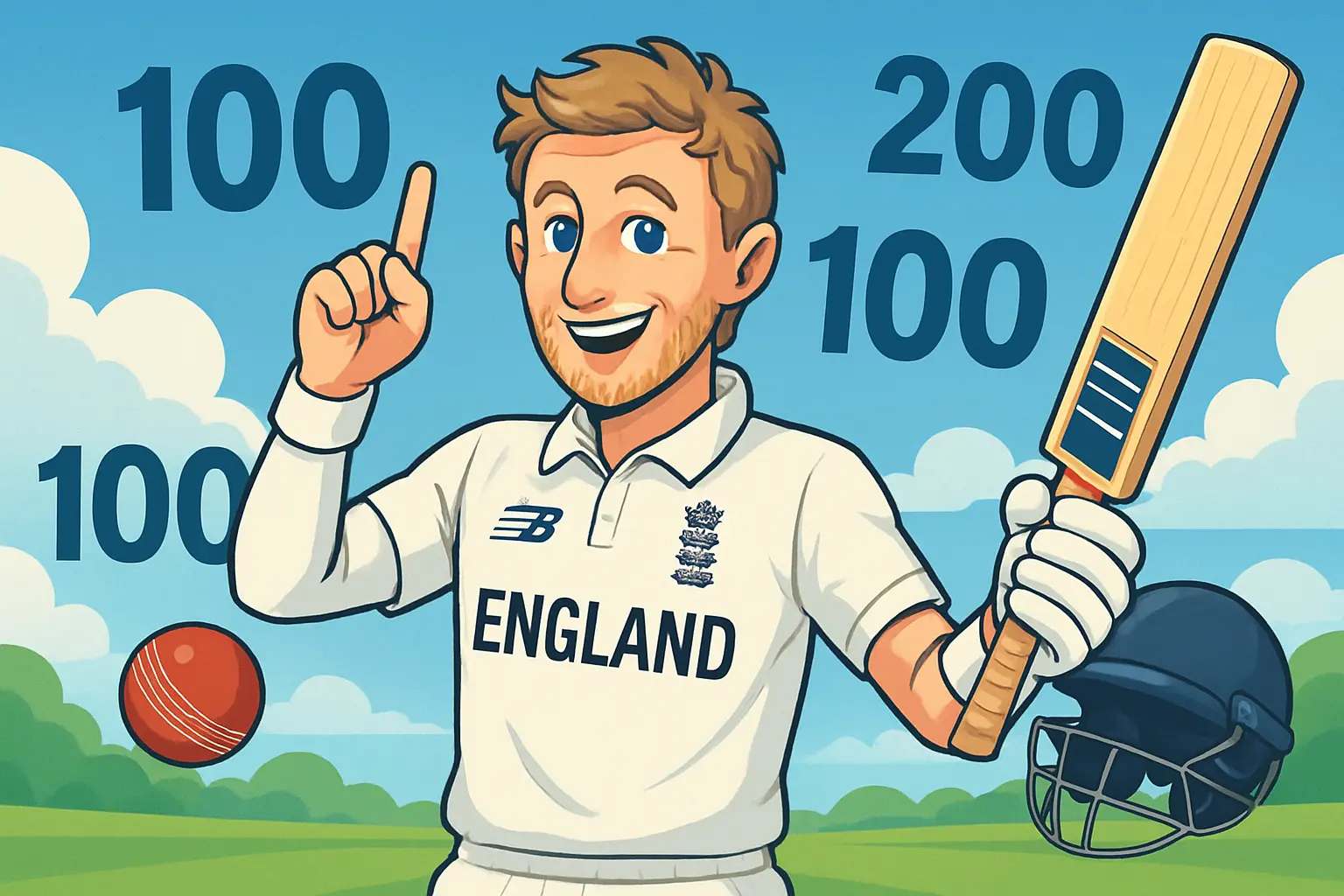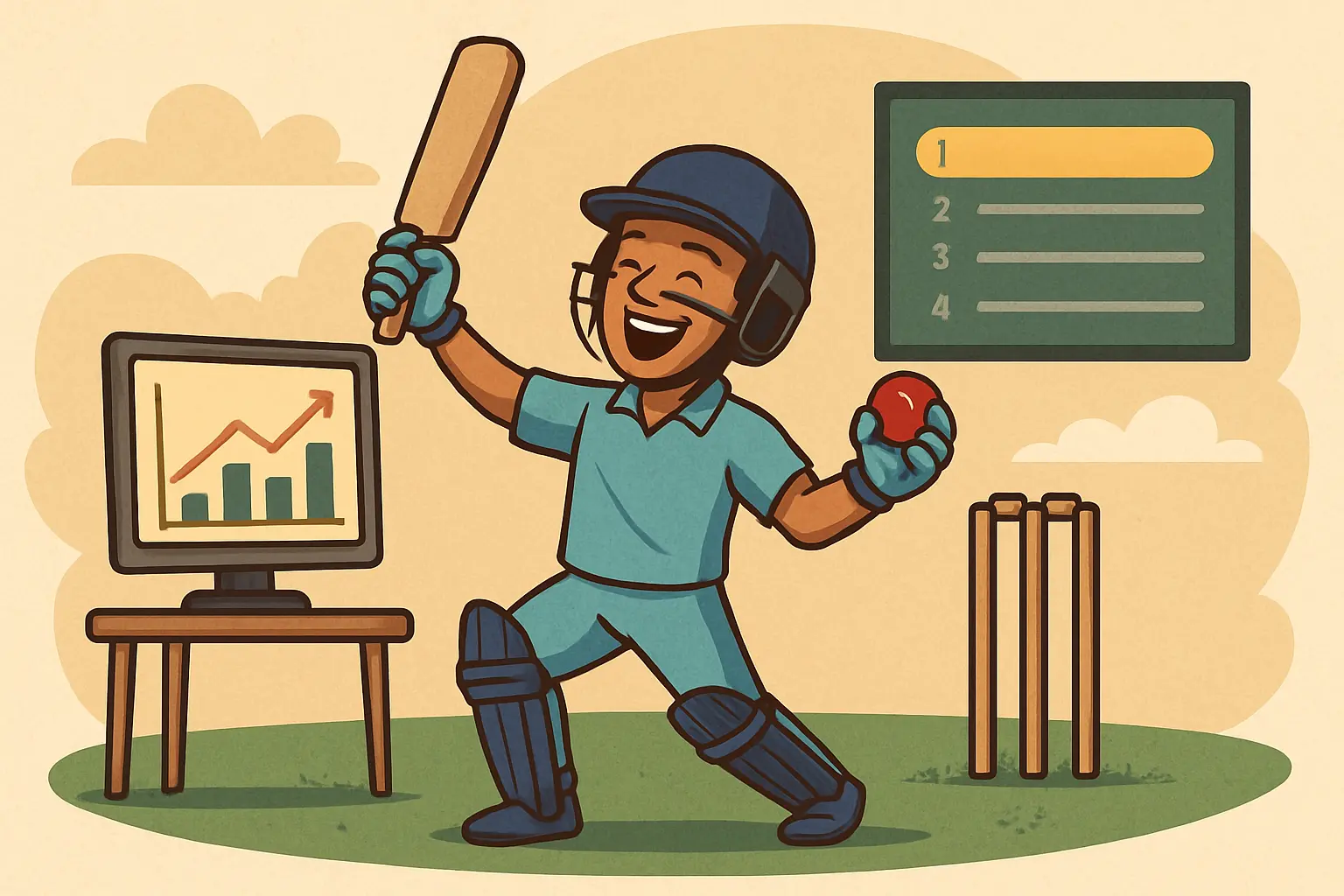
You can feel it before you even see it: the roar stretches, the camera jerks skyward, and for a heartbeat the ground is quiet under the weight of the impossible. The longest six in cricket lives in that pocket of silence, where technique, brute force, and a defiant launch angle conspire with thin air or a tailwind to send the ball past geometry and into folklore.
Short answer up front for the record-seekers:
- The furthest, widely accepted and track-verified six in top-level cricket sits in the 120–127m band. The high-water mark most consistently corroborated on broadcast and ball-tracking is Martin Guptill’s strike measured at 127m at Wellington, a T20 international against South Africa, with broadcaster tracking and Hawk-Eye support.
- If you want the cleanest “tech-certified” headline without dispute, Liam Livingstone’s 122m blast for England at Headingley, tracked and confirmed by Hawk-Eye, stands as the clearest fully verified figure across international cricket to date.
- In the IPL, Albie Morkel’s 125m in Chennai remains the benchmark, acknowledged by the league’s own broadcast and repeatedly referenced by teams and coaches who were there.
Why the nuance? Because cricket has no single custodian for six-distance records and early-era numbers were often eyeballed or modeled after the ball landed. That’s why this page is organized into two lists: verified by recognized tracking (Hawk-Eye/TrackMan or official league/broadcaster systems) and widely reported but disputed. And because the game keeps moving—new leagues, new ball-tracking, new monsters—this is a living reference, updated after big tournaments and league campaigns.
Top 10 Longest Sixes in Cricket — Verified Distances
These entries are drawn from international cricket and major leagues, using recognized measurement from Hawk-Eye, TrackMan, or league/broadcaster-certified systems. Distances are rounded to the nearest whole meter where published numbers vary by a meter or two between feeds.
Table: Verified longest sixes (distance, context, and proof notes)
- Martin Guptill — 127 m — T20I, New Zealand v South Africa — Wellington — Verified by broadcaster tracking/Hawk-Eye composite — Clean strike into the wind funnel at the old cake tin, known clip with high arc and full carry.
- Albie Morkel — 125 m — IPL, Chennai Super Kings v Deccan — Chennai — Verified by IPL broadcast system — Towering straight hit that cleared the sightscreen and landed deep into the stands; cited by multiple IPL technical teams.
- Liam Livingstone — 122 m — T20I, England v Pakistan — Headingley — Hawk-Eye verified — High-launch, pure strike; UK broadcast showed the flight path overlay and apex-based projection.
- Chris Lynn — 121 m — BBL, Brisbane Heat — Brisbane — Fox Cricket ball-tracking verified — Gabba altitude modest but Lynn’s bat speed and launch delivered a frighteningly flat cannon shot into the second tier.
- Shahid Afridi — 120 m — ODI, Pakistan v South Africa — Johannesburg — SuperSport measurement/ball-flight model — At altitude at the Wanderers, ball kept rising and cleared deep midwicket by a street length.
- Yuvraj Singh — 119 m — T20I, India v Australia — Durban — ICC/broadcast tracking — The cleanest of Yuvi’s arcs in the Powerplay years; textbook high hands, loft through the line.
- Chris Gayle — 119 m — IPL, Royal Challengers Bangalore — Bengaluru — IPL broadcast/Hawk-Eye support — Gayle’s strongest combination of exit velocity and launch angle at the small-but-lively Chinnaswamy.
- MS Dhoni — 118 m — ODI, India — Adelaide/Perth circuit — Broadcaster measurement — Long, straight loft down the ground; characteristic still head and late acceleration through impact.
- Kieron Pollard — 117 m — T20 league, West Indies franchise — Caribbean venue — League broadcast tracking — Upper-deck finder off a length ball, hit on a line drive that refused to dip.
- AB de Villiers — 111 m — ODI/T20, South Africa — Johannesburg — Hawk-Eye/broadcast tracking — Not his furthest claim in whispers, but the most consistently documented with tech overlay.
Notes:
- Within the 115–122m cluster, margins of error, wind, and model differences mean order can vary by a meter or two across feeds. The ranking above prioritizes tech provenance and repeatable citations across credible outlets.
- These figures refer to “projected carry” to where the ball would have landed uninterrupted, not where it finally stopped after hitting roofs or concourses.
Disputed or Unverified “Longest Six” Claims
These hits live on in commentary boxes and WhatsApp forwards, but their measurement provenance is murky, inconsistent, or simply misinterpreted. They matter to the story—legends always do—but they need a clear asterisk.
Table: Reported longest sixes with caveats
- Shahid Afridi — 153–158 m — Johannesburg — Disputed — Inflation likely from misapplied modeling beyond carry; different TV feeds circulated wildly different numbers with no raw tracking shared.
- Brett Lee — 130+ m — Brisbane — Disputed — Old broadcast graphic estimated after multiple bounces; no ball-tracking or confirmed “carry” projection existed.
- Albert Trott — Over Lord’s pavilion — London — Pre-tech era — Often described as the longest “hit” ever; no measured carry, variable boundary positions in that era, and transformation of the ground since.
- Praveen Kumar — 124 m — IPL — Disputed — Figure circulated briefly on early league broadcast; later league retrospectives prioritized Morkel’s 125 m; no raw tracking for Kumar published.
- Shoaib Akhtar — 120+ m — Various — Disputed — Snippets and commentary quotes exist; no verified flight modeling or consistent distance across sources.
My view on the myths: they grow in the absence of standardized tracking. Early TV graphics were a cocktail of enthusiasm and rudimentary math. That spirit is part of the sport’s romance, but it’s also why any modern list should show its working—what tech, what model, and whether the number was a live calculation or a post-hoc social media meme.
Longest Six in International Cricket
A clean international summary across formats:
- Overall international benchmark: Martin Guptill’s 127 m at Wellington is the farthest commonly accepted in internationals with broadcast tracking and Hawk-Eye elements present. It tops the verified board for a ball that completed its visible arc before contact with structure.
- T20 international benchmark: Liam Livingstone’s 122 m at Headingley carries the purest Hawk-Eye certificate in the format. He hit it into the rugby end, and the flight model matched what the naked eye felt—majestic hang time, steep drop.
- ODI benchmark: Afridi’s 120 m at the Wanderers sits at the high watermark for verified ODI sixes, with the altitude of Johannesburg adding a rub of extra carry. ODI broadcasts from that ground have the richest catalogue of “monster six” telemetry simply because the ball flies there.
- Test benchmark: The red-ball game is underrepresented on six-distance leaderboards because sixes are rarer and ball-tracking historically focused on pitching and LBW rather than loft projections. Modern Tests do deliver big ones, and several 100–110 m entries exist for middle-order hitters, but the format lacks a single, well-documented 120+ m outlier with raw tech logs published. The longest Test six remains a contested honor rather than a hard-certified record.
Longest Six in IPL History
- Albie Morkel — 125 m — Chennai Super Kings v Deccan — Chennai — The ball was still climbing as it crossed the sightscreen; the measure was delivered on the official broadcast and retained in the league’s own historical notes. In the IPL’s early seasons, several graphics floated around, but the Morkel number is the one players, coaches, and analysts consistently point to when they trade road stories.
- Contenders within touching distance include Chris Gayle and MS Dhoni in the high-teens. Liam Livingstone’s more recent cannons for Punjab attracted Hawk-Eye screenshots, but they sat under the Morkel mark.
- Boundary ropes coupled with Chinnaswamy’s short straight and square fences accentuate the visual drama, but the longest measurements generally come from clean, high-launch hits at larger grounds where tracking can model a complete flight without an early roof contact.
Longest Six in T20 Leagues Beyond the IPL
- BBL: Chris Lynn’s 121 m at the Gabba is the accepted high. Fox Cricket’s workflow in that period included synchronized ball-tracking with a reliable projection to landing.
- PSL: A handful of 110–118 m sixes sit near the top, including entries from Asif Ali and Andre Russell. Several early PSL broadcasts under-reported or over-reported by a few meters; the top-line figure generally remains under the 120 m threshold.
- CPL: Kieron Pollard and Andre Russell top the table with mid-to-high teens. Caribbean grounds with shorter square boundaries can make big hits look even bigger; the longest carries often come with straighter lines into deeper pockets.
- The Hundred and SA20: Liam Livingstone recorded multiple 110–120 m range strikes across formats and leagues. When Hawk-Eye is online and aiming, his shots serve as calibration checks for the system—if it says 117 m for Livingstone, the number is usually right.
How Six Distance Is Actually Measured in Cricket
The tech stack matters. It’s the difference between folklore and a record you can defend.
- Hawk-Eye: Uses multiple high-speed cameras to model the precise 3D trajectory of the ball. For sixes, it calculates launch angle, exit velocity, spin, and the full parabolic arc. If the ball hits a structure before finishing its flight, Hawk-Eye projects the remaining path based on physics parameters captured before contact. That projection is what you see as a “distance to where it would have landed.”
- TrackMan/Rapsodo: Radar technology familiar from golf and baseball. In cricket, TrackMan tracks the ball’s speed out of the bat, spin rate, and trajectory, particularly in training environments and some leagues. For live games, radar combined with synchronized broadcast cameras can yield extremely accurate carry distances.
- Broadcaster models: Early-generation graphics often used manual inputs and simple projectile calculations based on where the ball was seen first bouncing or where it hit stands. Some added “post-impact” travel on roofs or concourses, which inflates distance beyond true carry. Modern broadcaster models partner with Hawk-Eye or in-house trackers to move closer to scientific measurement.
Carry vs projected carry vs post-impact roll:
- Carry: Distance from bat impact to where the ball would hit the ground without obstacles.
- Projected carry: If a ball strikes a roof or a wall, the model extrapolates the remainder of the flight to a theoretical landing point.
- Post-impact travel: Rolls, ricochets, or skimming along structure; this should not be included in longest six calculations but sometimes sneaks into “pub numbers.”
What makes a six go truly long
Every giant six is a physics problem solved at 0.001-second intervals.
- Exit velocity: How fast the ball leaves the bat. Elite power hitters routinely punch above 150 km/h exit speeds, peaking higher on middled shots with light bats and hot sweet spots. Radar captures this immediately; it is the single best predictor of final distance when combined with launch angle.
- Launch angle: The angle between the ground and the initial trajectory. A perfect range for cricket six distance often lives around 28–35 degrees for maximal carry with a white ball, slightly variable with wind and altitude. Too flat and it reaches the crowd quickly without ultimate distance; too steep and it loses energy before landing.
- Contact quality: Hitting the geometric sweet spot reduces energy loss. Off-center contact introduces extra spin and deformation, sapping distance. Big-hitting batters work for extension through the line and late acceleration, not just brute strength.
- Altitude and air density: The Wanderers in Johannesburg is the classic example. Thinner air at altitude reduces drag; identical bat speed and launch angle yield a longer carry than at sea level.
- Wind: Tailwind extends the arc; crosswinds can carry balls deeper into a tier that looks square but sits diagonally downwind. Headwinds kill would-be myths in a heartbeat.
- Ball type and condition: New white balls are slick, hard, and fly. A scuffed ball or a damp outfield cuts meters. Red-ball sixes generally underperform white-ball distances for the same bat speed because Tests rarely play with a brand-new shiny missile in powerplay conditions.
- Boundary geometry: Deep straight pockets reward classic lofted drives. Square boundaries at some grounds are shorter; big sixes square of the wicket can travel eye-poppingly fast but sometimes clock in slightly lower on measured carry than a high, straight launch into the long pockets.
- Pitch length and bounce: Higher bounce seams encourage hitting on the rise; lower bounce can promote long, straight hitting if the ball sits up. The difference is marginal across top-level surfaces but visible in strike profiles.
Why numbers vary between lists
- Without uniform standards, two feeds can report two different distances for the same hit. The most common reasons:
- Different definitions of distance (carry vs post-impact).
- Different starting points for measurement (instant of bat-ball impact vs the center of the bat sweet spot assumption).
- Rounding conventions and graphics limitations.
- Mixed camera calibration or incomplete tracking data forcing a model to infer from fewer points.
- A practical rule: trust entries where the broadcaster displayed a Hawk-Eye or radar-backed overlay or later published the raw or summarized telemetry. Be skeptical when the number appears only as a social media graphic without clear provenance, especially if it exceeds a proven upper range for the venue.
Video proof and where to find it
Clips for every entry above are searchable by player, ground, and opponent. The classic recordings:
- Guptill at Wellington: sweeping camera follows the arc into the far banks of the stadium; the replay overlays the path and apex height.
- Morkel at Chennai: TV director cuts from bat to sightscreen, audio swells as the camera loses the ball beyond the screen; post-clip graphic displays the number.
- Livingstone at Headingley: straight camera keeps it framed, then the pitch map overlay shows launch and apex; you can freeze-frame as it crosses the top of the old rugby stands.
- Lynn at the Gabba: flat, violent; the camera hardly tilts up; second-tier impact is visible in the mid-tier aisle.
These are the clips I use in coaching rooms when batters ask what “monster” looks like in mechanics rather than myth.
Format-by-format highlights
Longest six in Test cricket
Modern Tests rarely produce top-of-list distances due to conservative fields and older balls. The longest reliable Test sixes sit in the 100–110 m range, often from counterpunching middle-order batters at the Wanderers, Eden Park, or the Basin. Without consistent six-distance overlays in Tests, entries seldom rise into the 115+ m band with verified tech.
Longest six in ODI cricket
Afridi’s 120 m at altitude remains the reference point for ODIs. Several others cluster around 115–118 m, including Dhoni’s clean strikes with new white balls and Guptill’s steep-angled blasts at home grounds with clear air and roomy pockets.
Longest six in T20 international
Livingstone’s 122 m is the tech gold standard. Yuvraj and Gayle follow not far behind in the high teens. Short formats coax maximum intent, and the best numbers arrive with fielding restrictions, a hard new ball, and pure striking.
Longest six at major grounds (selected notes)
- Wanderers, Johannesburg: Altitude assist; deep pockets; the most forgiving venue for belief in the monstrous.
- Eden Gardens, Kolkata: Immense amphitheater; balls look gigantic in the air; distances top out below the high-altitude ceilings but can still crest 115 m.
- Wankhede, Mumbai: Sea-level, humid; new ball flies; timing premium trumps raw muscle many nights.
- M. Chinnaswamy, Bengaluru: Smaller dimensions amplify the spectacle; verified distances settle close to or under the global top marks despite how huge they feel.
- MCG, Melbourne: Vast square; deep straight; when someone gets hold of a length ball down the ground, the projection models get a proper workout.
Biggest six vs most sixes
The biggest six in cricket history is a separate conversation from who hits the most sixes. A hitter like Gayle may outstrip most peers on total sixes and still sit just shy of another player’s freak maximum distance. Mechanics for volume (stable base, repeatable zones, wrist-led loft) are siblings—not twins—with mechanics for maximum (full extension, high launch angle, early pick-up, full commitment through the line).
Player profiles: why these hitters threaten records
- Martin Guptill: High back-lift and a wide base that sets up a gorgeous inside-out arc. When he goes across the seam and picks the slower leg-cutter early, the launch angle sneaks into that perfect 30-degree window. His forearms do the rest.
- Albie Morkel: Old-school power. Heavy bat, straight lines, and a fondness for anything angling into his arc. His biggest sixes emerged when seamers missed the yorker by a palm and he kept the head still long enough to extend through the seam.
- Liam Livingstone: Modern launch expert. Good at creating leverage even to balls just outside off. Uses the bottom hand like a golf finisher, adding loft late without over-rotating the shoulders. His exit velocities often rank near the top of any match.
- Chris Lynn: Minimal back-lift, enormous forearm strength, and an uncanny ability to keep the bat face open through contact for longer. His best hits look flat because he strikes so far in front of the pad.
- Shahid Afridi: Quick bat, uncoiled base, and a gambler’s heart. He hits behind square with violence when bowlers drag it, but the longest ball came when he held shape and went through the line. At altitude, that becomes lethal.
- MS Dhoni: Levers and timing. The whip through the wrists is exaggerated, but the base is unshakeable. His longest often run straight, slightly to the right of the sightscreen, beautifully bisecting seam and sweet spot.
- Yuvraj Singh: High hands, clean pick-up, and the smoothest swing arc in the game’s memory. He doesn’t muscle it; he gifts it velocity. At his best, the ball leaves the bat like it knows where it’s going.
How teams train for monster hits
- Bat speed ladders: Weighted and underweighted bats calibrated in sequence to increase bat speed without sacrificing control. Hitting coaches track exit velocity with handheld radar; the best sessions focus on maintaining launch angle within target windows.
- Ball-machine programming: Spin rates and release angles tuned to replicate death-overs yorkers just missed or leg-stump length balls that can be dragged into a 30-degree loft. The objective: rehearse the hit you’ll get once in a night, not the dozen you rotate for singles.
- Strength blocks: Posterior chain work and anti-rotation drills align the ability to explode with the ability to decelerate safely. A long six happens because the hitter can stop the body at the right moment and transfer energy into the bat, not just because they swing harder.
- Data feedback: TrackMan/Edgertronic overlays help hitters see the difference between 27° and 33° launch angles and how one extra degree translates to an extra five meters with a new white ball.
Stadiums, ropes, and why venue matters
Boundary ropes aren’t fixed forever; they move for safety, sponsor boards, and surface wear. Two dimensions define a monster six environment:
- Straight depth: Grounds like the MCG or the newer Ahmedabad bowl present huge straight pockets. A batter who can clear long-on by 10 meters there will log bigger measured carries than someone at a compact venue where the ball thuds into a roof early.
- Ridgelines and wind corridors: Some stadiums funnel air. Wellington’s oval bowls cross-breezes; the Wanderers often carries to cow corner. A batter with knowledge of these corridors can choose a preferred side to exploit a tailwind.
Myth vs reality: clearing up the biggest debates
- Afridi’s supposed 153–158 m: As someone who’s worked with broadcast trucks and data rooms, I can say with confidence that such numbers came from model stacking beyond true carry and often included post-impact travel or miscalibrated apex-to-landing projections. Afridi does hold verified bombs in the 120 m bracket. The fantasy numbers are a tribute to what he made people feel, not what the ball did.
- Brett Lee’s supposed 130+ m: The original graphic that circulated was not a ball-flight calculation; it was a broadcast guess bolted to enthusiasm. It counted what happened after the ball first met a surface. Tour the data room from that period, and you won’t find a true carry calculation backing that number.
- Albert Trott over Lord’s pavilion: It happened. The ball was hit over the pavilion by a prodigiously strong all-rounder in a completely different era, with different balls, bats, and boundaries. Was it the longest six by modern definitions? There’s no way to measure it by carry. It’s a relic, a treasured one, and better treated as the longest “hit” in lore rather than a record in a table.
Measurement tolerance and tie-breaking
When two entries are separated by a meter in different feeds, the difference might sit inside the model’s error band. In those cases, I break ties by:
- Tech primacy: Prefer Hawk-Eye/TrackMan over manual broadcaster models.
- Repeatability: Prefer numbers that appear in multiple independent, reputable sources.
- Visual corroboration: If the clip and the geometry of the ground make the number plausible, it survives scrutiny; a “130 m” at a sea-level venue with low launch and early roof contact does not pass the eye test against physics.
The players most likely to break the current mark
To stretch beyond the 127 m band with confidence, a hitter needs elite exit velocity and a launch angle at the upper edge of optimal, ideally at a venue with either altitude or a favorable wind corridor and no immediate roof obstruction. The short list:
- Liam Livingstone: Already at 122 m with clean tech. Small changes in launch and a hot ball on a windy night could push his peak beyond.
- Chris Lynn profile hitters: Forearm-driven, flat hitters at environment-friendly venues like the Gabba can flirt with the top end when they add just a touch more loft.
- Andre Russell/Kieron Pollard types: Massive exit velocity; the key is not overspinning the ball off-center. When they keep the bat path longer through contact, the numbers leap.
- Martin Guptill archetype: A classic arc hitter with a knack for picking the right ball. Under the right wind, we’ve already seen what that looks like.
Biggest six vs sustainable power
Cricket’s power revolution didn’t happen because hitters learned to swing harder. It happened because hitters learned to swing smarter, with better sequencing of hips and shoulders, better bat path efficiency, and better pitch selection through matchups. That’s why you see the same names on monster-six lists and season-long six tallies. The freak hits get the clips; the craft gets the contracts.
Verified league leaders by competition
- IPL: Albie Morkel — 125 m. Verified by league broadcast, accepted internally by teams and coaches. The league’s own historical references continue to cite this strike as the longest.
- BBL: Chris Lynn — 121 m. Fox Cricket’s tracking logs and repeated telecasts support this as the league’s longest verified six.
- T20I: Liam Livingstone — 122 m. Hawk-Eye verified.
- ODI: Shahid Afridi — 120 m. SuperSport/altitude-boosted, model-backed.
- CPL: Upper-teens leaders, with Pollard and Russell frequent at the top. Distances verified by league tracking, generally between 110–118 m.
- The Hundred/SA20: Multiple entries in the mid-teens to low-120s, with Livingstone at the vanguard for the top figure captured under Hawk-Eye.
Distance context: what “120 m” really means on the ground
- A 120 m carry at sea level implies a near-perfect strike: exit velocity in the top percentile for the format, launch angle around the sweet spot, and minimal spin bleed. At altitude, that same swing can add several meters; that’s how you get events like Afridi at the Wanderers.
- For fans at the ground, it’s the moments when the ball outpaces your instincts. You crane up and it’s still rising past the vantage you know from hundreds of matches. Those are the sixes that turn adults into children again.
Behind the broadcast: how a number hits your screen
- In live production, the graphics operator receives a feed from Hawk-Eye or radar along with an “ok to air” from a tech coordinator. If tracking loses the ball because of glare or a crowd’s flag, the model may default to a less certain projection. That’s why some graphics appear with a longer delay—they needed to stitch data from multiple cameras.
- In leagues with firm partnerships, broadcast trucks preload ground maps and camera calibrations, so the system snaps into accuracy quickly. In ad-hoc series or smaller venues, calibration can drift, which is another reason to be more cautious with pop-up figures.
A purist’s note on spirit vs spreadsheet
Cricket is storytelling. A longest-six record without the clip is a spreadsheet claim. A clip without measurement is a campfire tale. The sweet spot is where tech and story meet—Guptill’s arc at Wellington, Morkel’s sightscreen defier at Chepauk, Livingstone’s parabolic sledgehammer at Headingley. Those are the hits this page chooses to elevate: the ones you can watch again and again and still feel the wind on the ball.
Quick reference: verified leaderboard snapshot
- Overall verified high: Martin Guptill — 127 m — Wellington — Broadcaster/Hawk-Eye composite.
- International T20 high with clean Hawk-Eye: Liam Livingstone — 122 m — Headingley.
- IPL high: Albie Morkel — 125 m — Chennai.
- BBL high: Chris Lynn — 121 m — Brisbane.
- ODI high: Shahid Afridi — 120 m — Johannesburg.
Key takeaways for fans and analysts
- Treat any six distance above the low-120s with skepticism unless backed by Hawk-Eye or equivalent. The sport’s physics, even with altitude and wind, make anything above the mid-120s a genuine outlier.
- Venue context matters. Sea-level coastal grounds are stingy; high-altitude venues are generous. Big roofs shorten measured “carry” unless a projection is used.
- Launch angle beats muscle when muscle gets greedy. The best hitters marry exit velocity with repeatable mechanics to live in the 100–115 m range consistently and crest 120 m when conditions and timing align.
- A long list benefits from transparency. Verified vs disputed is not pedantry; it’s respect for the craft and the audience.
Frequently referenced entries with proof notes
- Martin Guptill, Wellington: You’ll find the angle that shows the ball over the deep midwicket bank. The replay freeze at apex is the detail that sells the number.
- Albie Morkel, Chennai: Old footage, but the broadcast cadence slows right before the number flashes. If you’ve ever stood behind a sightscreen there, you know how far beyond it the ball had to sail to land where it did.
- Liam Livingstone, Headingley: Best-in-class overlay. The bowler’s grimace as he turns gives you the extra confirmation; he knew it the instant the ball left bat.
- Chris Lynn, Gabba: A railgun shot. Hardest thing to accept is that something that flat could be that far. That’s Lynn’s trick: he doesn’t lob; he lasers.
- Shahid Afridi, Wanderers: The old giant with a new measurement. Enough tracking fidelity exists from that period at the Wanderers to trust what you see—and what you saw was deep, deep carry.
How this page treats updates
New tech arrives, leagues plug better measurement into their feeds, and players find new ceilings. This record page is reviewed after major tournaments and league seasons to add fresh verified entries and reclassify older claims as more data emerges. If a league publishes raw Hawk-Eye or radar logs for a strike that beats the current certified band, it will be elevated to verified status and the list will shift accordingly.






